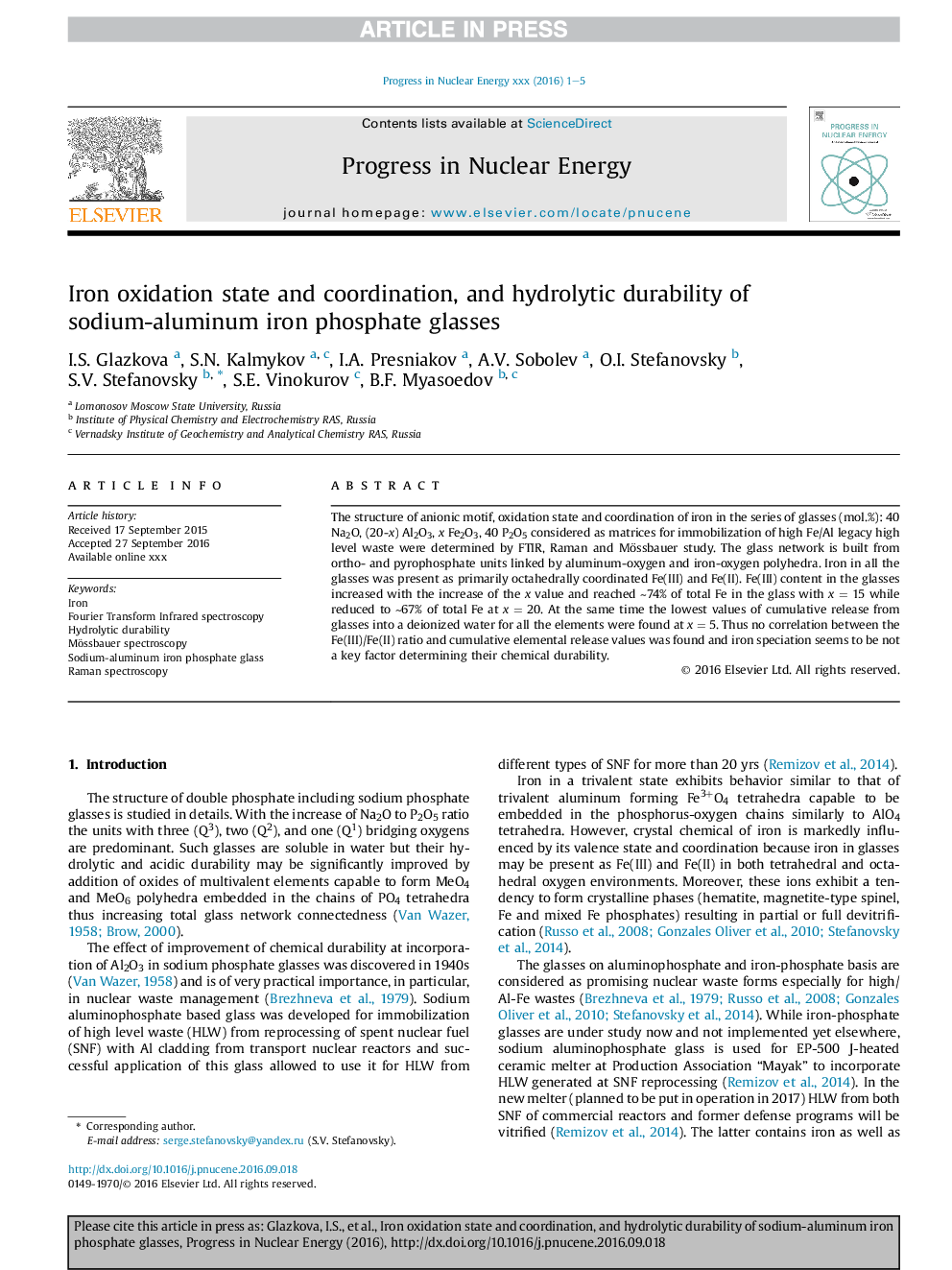| Article ID | Journal | Published Year | Pages | File Type |
|---|---|---|---|---|
| 5478241 | Progress in Nuclear Energy | 2017 | 5 Pages |
Abstract
The structure of anionic motif, oxidation state and coordination of iron in the series of glasses (mol.%): 40 Na2O, (20-x) Al2O3, x Fe2O3, 40 P2O5 considered as matrices for immobilization of high Fe/Al legacy high level waste were determined by FTIR, Raman and Mössbauer study. The glass network is built from ortho- and pyrophosphate units linked by aluminum-oxygen and iron-oxygen polyhedra. Iron in all the glasses was present as primarily octahedrally coordinated Fe(III) and Fe(II). Fe(III) content in the glasses increased with the increase of the x value and reached â¼74% of total Fe in the glass with x = 15 while reduced to â¼67% of total Fe at x = 20. At the same time the lowest values of cumulative release from glasses into a deionized water for all the elements were found at x = 5. Thus no correlation between the Fe(III)/Fe(II) ratio and cumulative elemental release values was found and iron speciation seems to be not a key factor determining their chemical durability.
Related Topics
Physical Sciences and Engineering
Energy
Energy Engineering and Power Technology
Authors
I.S. Glazkova, S.N. Kalmykov, I.A. Presniakov, A.V. Sobolev, O.I. Stefanovsky, S.V. Stefanovsky, S.E. Vinokurov, B.F. Myasoedov,
